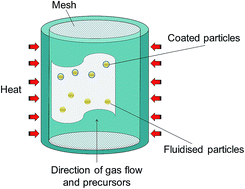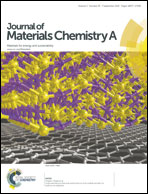High-throughput synthesis of core–shell and multi-shelled materials by fluidised bed chemical vapour deposition. Case study: double-shell rutile–anatase particles
Abstract
Fluidised Bed Chemical Vapour Deposition (FBCVD) has been widely used for the industrial production of corrosion resistant and mechanically robust coatings. Laboratory-based FBCVD rigs are less common, however, this technique is ideal for the high-throughput production of core–shell and multi-shelled materials, allowing large areas to be coated in a fast and cost effective way. The method is also convenient for the optimisation of advanced materials with tuned structural, electronic and functional properties. In this work, the synthesis of double-shelled rutile–anatase TiO2 particles is presented as a case study. Electron transfer mechanisms at the junction level of the two polymorphs have been reported as responsible for the high efficiency of TiO2-based materials, such as the well-known Evonik P25 standard. The photocatalytic performance of the double-shelled particles was evaluated during the mineralisation of a model organic pollutant (stearic acid) and compared with that of the individual components. To the best of our knowledge, this is the first time that multi-shelled particles have been synthesised from a chemical vapour deposition route.


 Please wait while we load your content...
Please wait while we load your content...